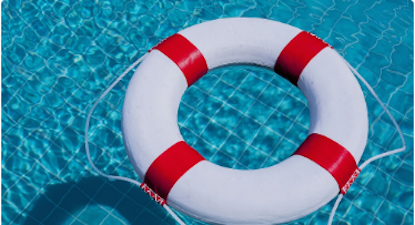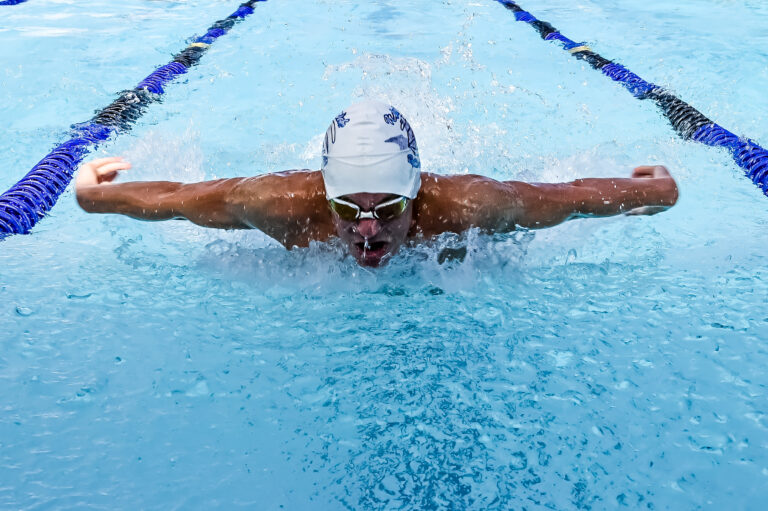People don’t often think about safety during swim practices because those kids are already great swimmers. Usually we think of drowning as something that happens to people who don’t know how to swim (and that is true) but even people who know how to swim, and swim well, drown. On June 20 of this year Elise Cerami went to swim practice, as she did every day. When she began her warm up at 6:45am it was still dark. Shortly after warm up started a teammate noticed she was underwater and in trouble. It’s not known how long she was under but her coach got her out of the water and immediately began CPR. Elise died a few hours later in hospital. Elise was going to be a freshman in the fall; she swam with her team’s “elite” squad, training for the senior team.*
The tragedy of Elise’s death brings to the fore the question of water safety during swim practices. SwimTopia provides swim team management software to hundreds of swim teams around the country. We primarily work with summer swim teams where the participants are more likely to be new swimmers, less experienced and less confident in the water. Summer swim teams are much bigger than most year-round swim teams, averaging between 100 and 200 swimmers, and they usually train in community pools where there may or may not be lifeguard supervision. So what can and should swim teams do to increase safety during swim practices?
Safety During Swim Practices and Meets
We talked to Alissa Magrum, water safety expert and Executive Director of Colin’s Hope, an Austin based drowning prevention and awareness organization, to get some suggestions.
SwimTopia: What measures should be taken to ensure safety during swim practices for swim team participants?
Alissa: As a drowning prevention advocate, a swimmer AND a mom to 3 swim team girls, I absolutely would encourage swim teams to always have a certified lifeguard on the stand at practices and at swim meets. Technically, if a coach is trained and certified by USA Swimming, they are able to serve as the safety professional. Personally, I think they should be able to focus on coaching, serve as an extra layer of protection, but rely on the lifeguards to see the entire pool from an undistracted viewpoint (a lifeguard chair above the pool). If you haven’t been to a pool during swim practice (which I know you have), there are lots of bodies swimming in lanes, the water is chaotic and it can be very hard to see the bottom of the pool; add in the early morning darkness of some practices and you have a potentially dangerous situation. I would encourage coaches to ask (if not demand) that lifeguards be on duty to ensure safety during swim practices. As a parent, I would recommend the same. If it means an added cost, then I certainly would pay it. The cost of a lifeguard on duty spread out among an entire team of swimmers would be minimal as compared to the cost of a life lost.
SwimTopia: What can swim team parents do if they don’t think there are adequate safety measures in place at their pool?
Alissa: Swim team parents must be their child’s advocates. If you even question the safety at your pool, please go directly to the swim coach or the pool manager. Each pool and swim team is structured differently so you may need to do some asking around to determine WHO to ask but the bottom line is… ASK. I have gone to the pool manager when the water was cloudy to ask about the chlorine and I have gone to ask about lifeguards as well. As parents, we must do what we can to keep our kids as safe as possible. I recommend talking with other parents and organizing as a group if safety is a question. There is something to be said for a louder voice. However, remember to keep safety as your focus so that your concerns will better be heard. There are other ways parents can help promote a culture of water safety – beginning with talking to our own kids about water safety and their behavior around water. Of course, being CPR certified is always an added layer of protection and a tool we can all keep in our toolbox – hoping we never have to use it.
SwimTopia: How can swimmers help themselves and each other be safer around water?
Alissa: Swimmers can definitely help with water safety by arriving to practice well hydrated and well rested. If they have medications (an inhaler for example), they need to be responsible for having it accessible (if it’s age appropriate) and communicating with coaches about their needs. I know my kids will tell the coach if they are not feeling great or will get out and rest if needed. We need to remember that while they may be competitive, they are also kids and we should never put health or life on the line. Swimmers should be taught how to recognize a swimmer in trouble, be told to pay attention to their fellow swimmers and can even be trained how to help rescue someone or themselves. I also recommend teaching kids not to play breath-holding games and to always tell an adult if something feels or seems unsafe. Often listening to our gut can help prevent bad things from happening. Empowering kids to take control of their own safety sometimes can be an amazing thing and will follow them out of the pool and into life.
SwimTopia: Thanks for these tips and suggestions Alissa!
How You Can Help/Learn More
- If you’d like to learn more about water safety and drowning prevention Colin’s Hope has helpful resources where you can find more information. Test your basic water safety knowledge with their Water Safety Quiz, you might be surprised by what you learn! And you can help by pledging to be a Water Guardian when you’re around water.
- More tips and suggestions on preventing childhood drowning can be found in this article by Safety.com.
- Families United to Prevent Drowning is a group of family foundations that are working together to prevent drowning and entrapment. This coalition of Foundations from around the country have come together to support each other’s work and to increase their reach throughout the country to ensure no family experiences a loss due to drowning. They support each Foundation’s mission and know that each is impacting their community in a unique way. See the Families United to Prevent Drowning website to see if there is a drowning prevention and awareness organization near you. Follow them on Facebook and Twitter @NoChildDrowns #NotOneMore
- You can make a tax deductible donation to help Colin’s Hope promote drowning prevention and awareness by supporting “Team SwimTopia 2016“, Athlete Ambassadors for Colin’s Hope.
* Reference: New York Daily News




